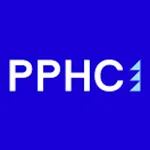|
|
Many industry consultants are urging PR firms to dump billable hours and replace it with a fixed-pricing model, or even value pricing. For some reason, billable hours seems to be set in stone in many service organizations, including PR agencies.
The beginning of billable hours begins with the initial proposal. By this I mean a price is determined, usually based on hours to complete the project. Staff is given budgets to complete a project and record their time in a time keeping system. At the end of the project, management has a profit or loss based on billable hours. More frequently than not, the question asked is, “How can this have taken that much time?” The question translates into a realization write-off and overall dissatisfaction from the account supervisor and the team members!
Some history
So what is wrong with the billable hour? The billable hour was never meant to be a pricing method. It was originally intended to be a tool to allow a service organization to measure the profitability of an engagement, not a means to price it. It is a cost accounting tool!
Ask a professional of any profession to eliminate his or her time sheet. Staff will chuck it in an instant. Management would be concerned that they would not know whether or not they made money on an individual engagement. This is a valid point but wrong! The concept of using a standard billing rate is not cost accounting but profit forecasting. By this I mean knowing the desired net income of the firm using a cost plus formula. By the way, a cost plus formula is only as good as the determination of the cost plus formula input. The US Post Office uses cost plus to determine price. We know how well it does!
Lessons from the accounting profession
Many CPA firms are still using billable hours internally to help calculate a fixed monthly rate for some of its clients. However, other firms are completely discarding the notion of an hourly metric and instead use “value pricing” to determine prices based on the value of the service to the client. It is interesting that based on accounting firm surveys, the majority of CPA firms still use the billable hour. Those that say they use value pricing are really just using another form of the billable hour according to Ron Baker, a well-known value pricing consultant.
What’s wrong with using billable hours?
According to Ron Baker, the billable hour relies on practitioner’s input, namely time, rather than the output, results. The value of the results should determine the cost of the service, not the time it takes to achieve them. Otherwise, firms can find their revenue stream severely limited. (There are only so many hours a person can work in a day.) Also, think about this — how much time and energy does it take to track time, analyze the result, and labor over what went wrong! The time is better spent on results for clients!
Challenges
Firms are hesitant to move away from the billable hour, because firm management still needs to track time to determine their costs and gauge which services produce the best margin. (In my view even this is not done properly.) Baker disagrees with this notion, arguing instead that other methods such as price-led costing, project management, key predicative indicators, and after-action reviews are better suited to determining and managing costs than time sheets.
If your client demands hourly billing
There are many clients that want to see all the detail behind the bill, including how you determined the billable rate, etc. According to Baker, some buyers of your expertise are so used to buying services based on time and rate, they demand to know this. I have been asked many times to provide the firm’s billing rates in the proposal. It is also true that sometimes a client/customer just wants to buy your time (perhaps to ask a numerous questions according to Baker), and the only benchmark of value in that instance is the time spent. This is not the type of client you want to deal with, since the client has no idea of the value you bring, or if he/she does, is not willing to pay for it. After all, you spent a lifetime learning your craft, why should you give $10,000 of value to a customer in a one hour meeting? Better yet, why should you provide this value in the proposal?
Determining profitability
If you eliminate time sheets, how will you know if you are profitable? It is simple: income statement management. Look at the cost of labor as a percentage of gross revenue. This is a different mindset from pouring over hourly reports. Not comfortable with this? Keep your time sheets and make it a true cost accounting system, rather than a pricing model.
I would be remiss if I did not give you the reader the advantages and disadvantages of hourly billing so here are just a few:
Some advantages: It’s easy and efficient; it can be a cost accounting tool; and it transfers risk to the client if the engagement goes over budget.
Disadvantages: Focuses on hours not value; places risk on the client; fosters a production line, not an entrepreneurial spirit; creates a subsidy system where some clients are overcharged and others are undercharged in order to meet hourly quotas; transmits no useful information other than identifying rainmakers, managers, and technicians, and useful information is found in client service, attitude, client retention ability, profitability and collection, ability to delegate, monitoring skills, etc.; focuses on efforts not results; encourages the hoarding of hours to fulfill quotas; penalizes technological advances; rates are set by reverse completion, where you look at the rates of your competition in your market and see where you fit in; creates bureaucracy; does not differentiate a firm; and limits income potential.
Get the picture?
More next month on this subject, including a case study by a major law firm on “killing” billable hours.
* * *
Richard Goldstein is a partner at Buchbinder Tunick & Company LLP, New York, Certified Public Accountants.



 Omnicom CEO John Wren reports Q1 revenues jumped 5.4 percent to $3.6M, powered by a solid 7.0 percent rise in its advertising & media segment.
Omnicom CEO John Wren reports Q1 revenues jumped 5.4 percent to $3.6M, powered by a solid 7.0 percent rise in its advertising & media segment. Public Policy Holding Company registered 24.1 percent growth to a record $135M during the past year, which included the results of the March 1 acquisition of Multistate Assocs.
Public Policy Holding Company registered 24.1 percent growth to a record $135M during the past year, which included the results of the March 1 acquisition of Multistate Assocs. Stagwell CEO Mark Penn reported Q4 net revenues dipped 5.6 percent to $551.1M during a “challenging year for marketing services and digital transformation.”
Stagwell CEO Mark Penn reported Q4 net revenues dipped 5.6 percent to $551.1M during a “challenging year for marketing services and digital transformation.” Why M&A activity in the PR and marketing sector could pick up in 2024.
Why M&A activity in the PR and marketing sector could pick up in 2024. WPP reported Q4 revenues inched ahead 0.3 percent to $4.1B as CEO Mark Read wrapped up a year that he said was more challenging than expected due to cutbacks, mainly by technology clients.
WPP reported Q4 revenues inched ahead 0.3 percent to $4.1B as CEO Mark Read wrapped up a year that he said was more challenging than expected due to cutbacks, mainly by technology clients.


 Have a comment? Send it to
Have a comment? Send it to 
No comments have been submitted for this story yet.